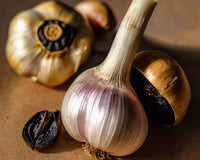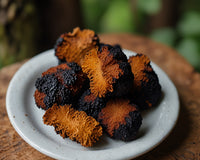With its bright yellow hue and tangy flavor, the Lisbon lemon is a delightful citrus variety that has captured the hearts of many. Originating in Portugal, these lemons bring a burst of freshness to culinary creations and are renowned for their unique properties.
Origin and characteristics:
Portuguese Heritage:
As its name suggests, Lisbon Lemon has its roots in the vibrant city of Lisbon, Portugal. The region's climate and soil conditions contribute to the unique qualities of these lemons. Lisbon lemons are one of the most widely planted lemons in California and are widely grown in citrus-growing regions around the world. It is considered a Gallego seedling selection from Portugal.
Lisbon lemons began commercially available in the mid-to-late 19th century, and this hardy variety quickly became popular due to its ability to be harvested multiple times, tolerate temperature and cold swings, and self-fertilize. One of the unusual characteristics of Lisbon lemons is that the fruit grows within the canopy. This protects the lemons from weather and wind, giving the fruit a more finished, smooth appearance that is beneficial to the commercial market.
The Lisbon lemon, botanically classified as a citrus lemon, is a common acidic variety belonging to the Rutaceae family.
appearance:
Lisbon lemons are known for their bright yellow color, which is reminiscent of Portugal's sunny landscapes. They typically have smooth, thin skin and a classic lemon shape.
Lisbon lemon trees grow vigorously into tall, thorny, upright yet spreading trees. Due to its vigorous growth habit, the fruit is usually found within the canopy. New leaves and flowers are tinged with purple. Lisbon trees produce a variety of crops each year, but the main crop is winter and early spring. The fruit is medium-sized, oblong, with prominent papillae. When fully ripe, the peel is slightly textured and yellow. The pulp is light yellow-green, has few seeds, and is highly acidic. There are many named varieties of Lisbon lemons, which have individual characteristics that differ from the original clones.
Fruit medium-sized, oval to oblong; base tapering to an inconspicuous neck; apex similarly tapering, forming a usually large, prominent nipple with an irregular areolar groove around the nipple, usually deeper on one side . Seed content is variable, but usually little to none. The color is yellow when ripe. The outer skin is of medium thickness; the surface has small pits, slight wrinkles, and inconspicuous ribbing; tightly adherent. The number of segments is about 10; the core is small but strong. The flesh is light yellow-green in color; the particles are fine, the flesh is tender and juicy; the taste is very sour. Crops are mainly harvested in winter and early spring.
Flavor profile:
Powerful Flavor: Lisbon lemons are characterized by their lively and tangy character, making them a popular choice for both sweet and savory dishes. When the peel is scraped, rubbed, or sliced, it releases a fragrant citrus aroma, and the flesh is highly acidic, producing a sour, tangy flavor that's balanced by a subtle sweetness.
Culinary uses:
Cooking and Baking:
Versatility in the kitchen: Lisbon lemons are prized for their versatility in the kitchen. The zest and juice of these lemons enhance the flavor of a variety of dishes, from savory marinades to sweet desserts.
Refreshing drinks:
Lemonades and Cocktails: The vibrant acidity of Lisbon lemons makes them perfect for refreshing drinks. Lemonades, cocktails, and citrus waters all benefit from the bright flavor of Lisbon lemons.
Save for pickling:
Preserving the Harvest: The acidity of Lisbon lemons makes them ideal for preserving and pickling. Candied lemons and preserved lemons are popular additions to a variety of dishes.
Nutritional value:
Lisbon lemons are an excellent source of potassium to balance fluid levels in the body, vitamin C to strengthen the immune system while reducing inflammation, and folate to assist in the production of red blood cells. These fruits also provide fiber that regulates the digestive tract, calcium and phosphorus that protect bones and teeth, and other nutrients including zinc, copper, magnesium, B vitamins, iron, and niacin. In addition to vitamins and minerals, lemons contain ascorbic acid, which helps prevent oxidation of fruits and vegetables. Lisbon lemons are often squeezed over fruits such as apples, peaches, and avocados to prevent them from browning.
Horticulture and Cultivation:
Xiyang tree:
Ideal Growing Conditions: Lisbon lemon trees thrive in warm, sunny climates and well-drained soil. They are perfect for backyard gardens and orchards.
Harvest throughout the year:
CONSISTENT PRODUCTION: Lisbon lemon trees are known for their ability to produce fruit year-round, providing a steady supply for home gardeners and commercial growers alike.
in conclusion:
With its sunny personality and diverse flavor profile, Lisbon lemons have become a staple in kitchens around the world. Whether adding a citrus kick to your favorite recipes or enjoying a refreshing glass of lemonade, the appeal of Lisbon lemons goes beyond their vibrant appearance. When you taste the rich aroma of Lisbon lemons, you're not just indulging in citrus fruits; You'll experience the rich culinary tradition that originates from Portugal's charming city of Lisbon.














